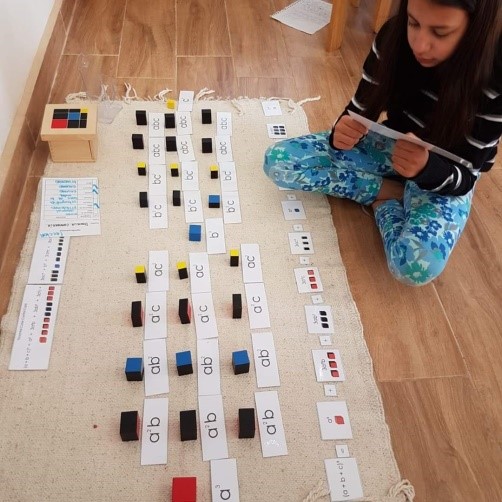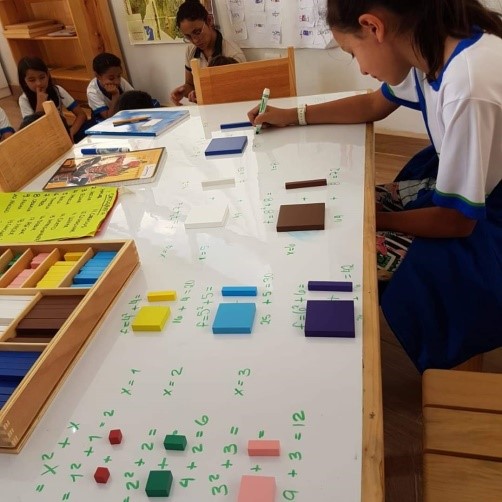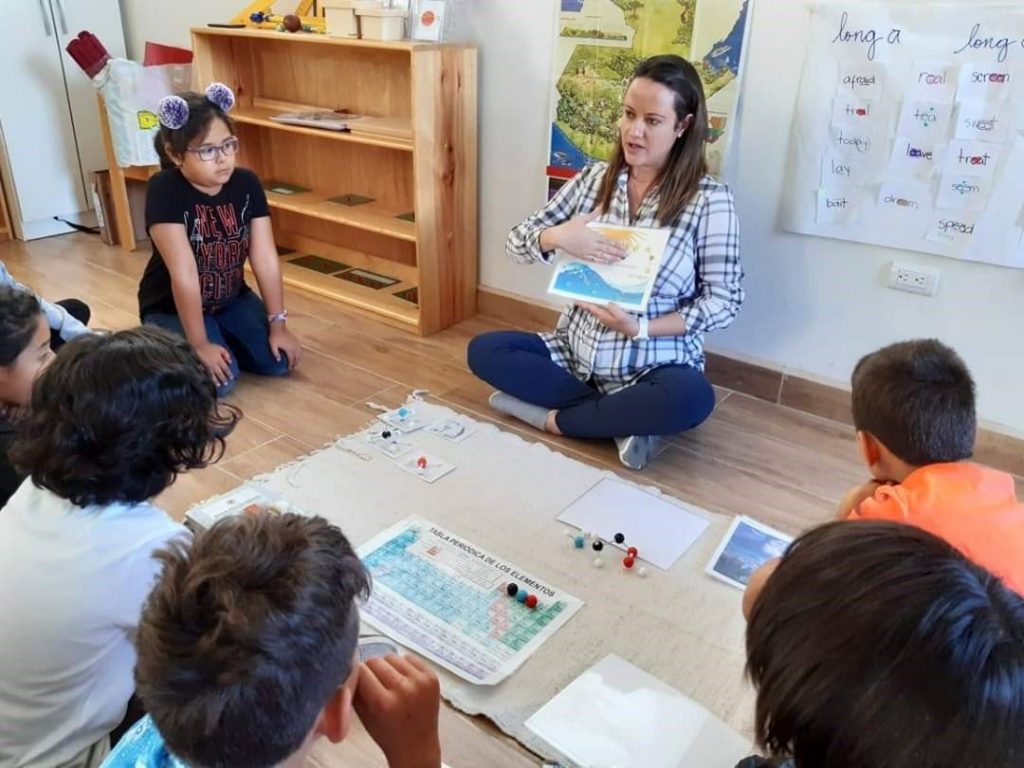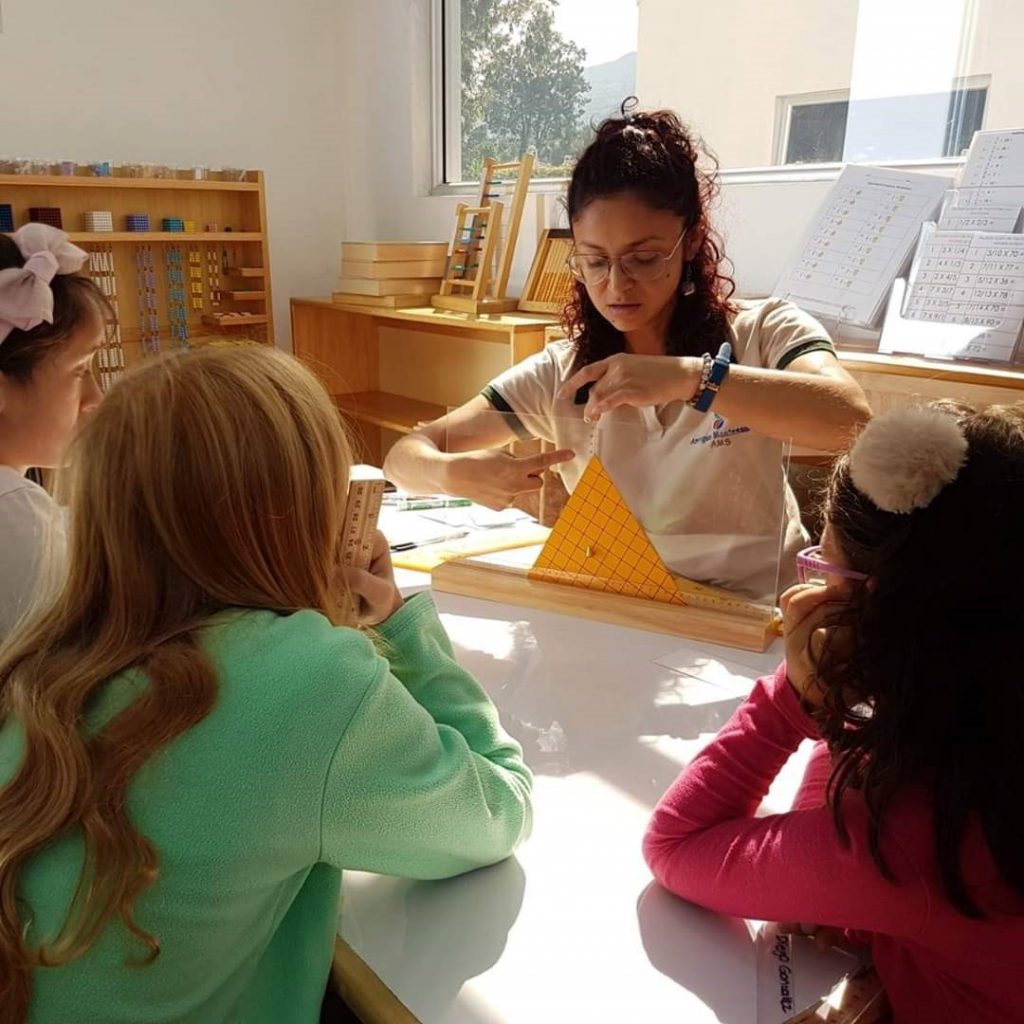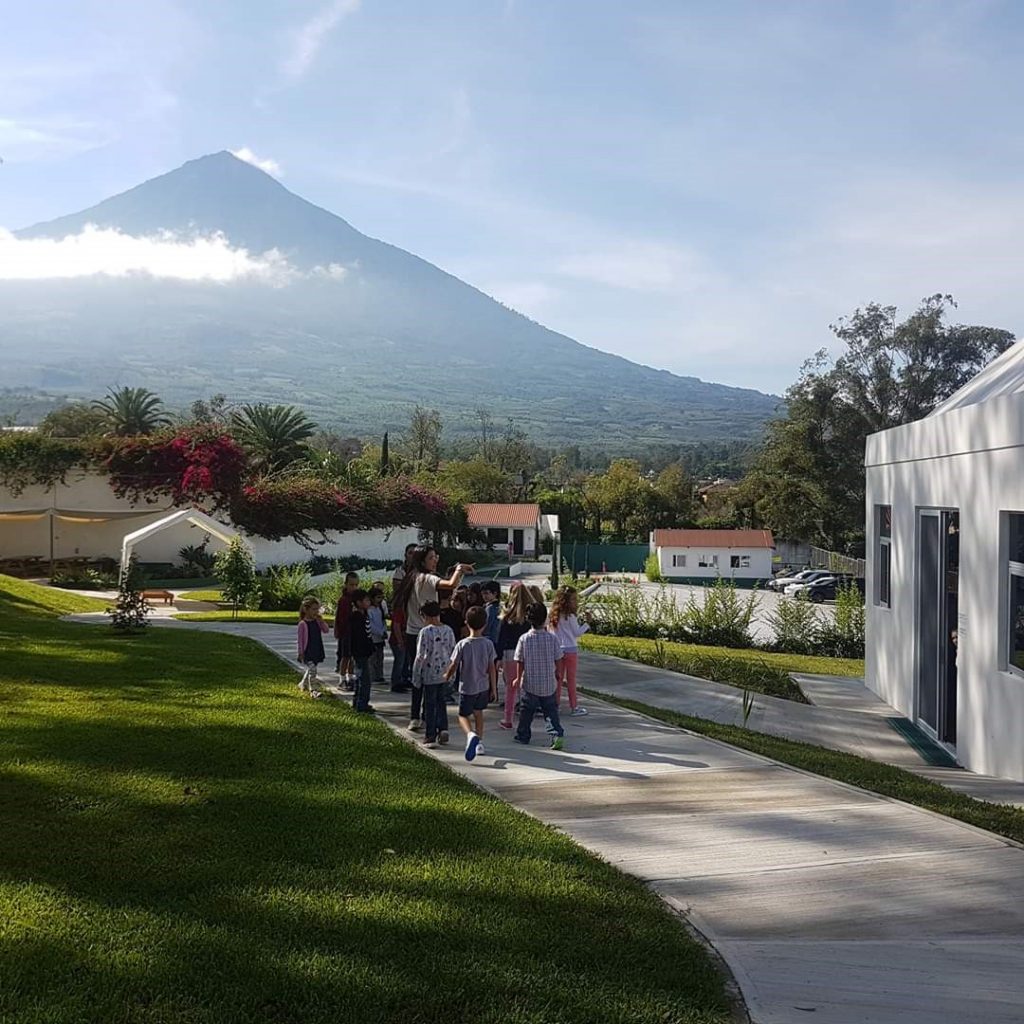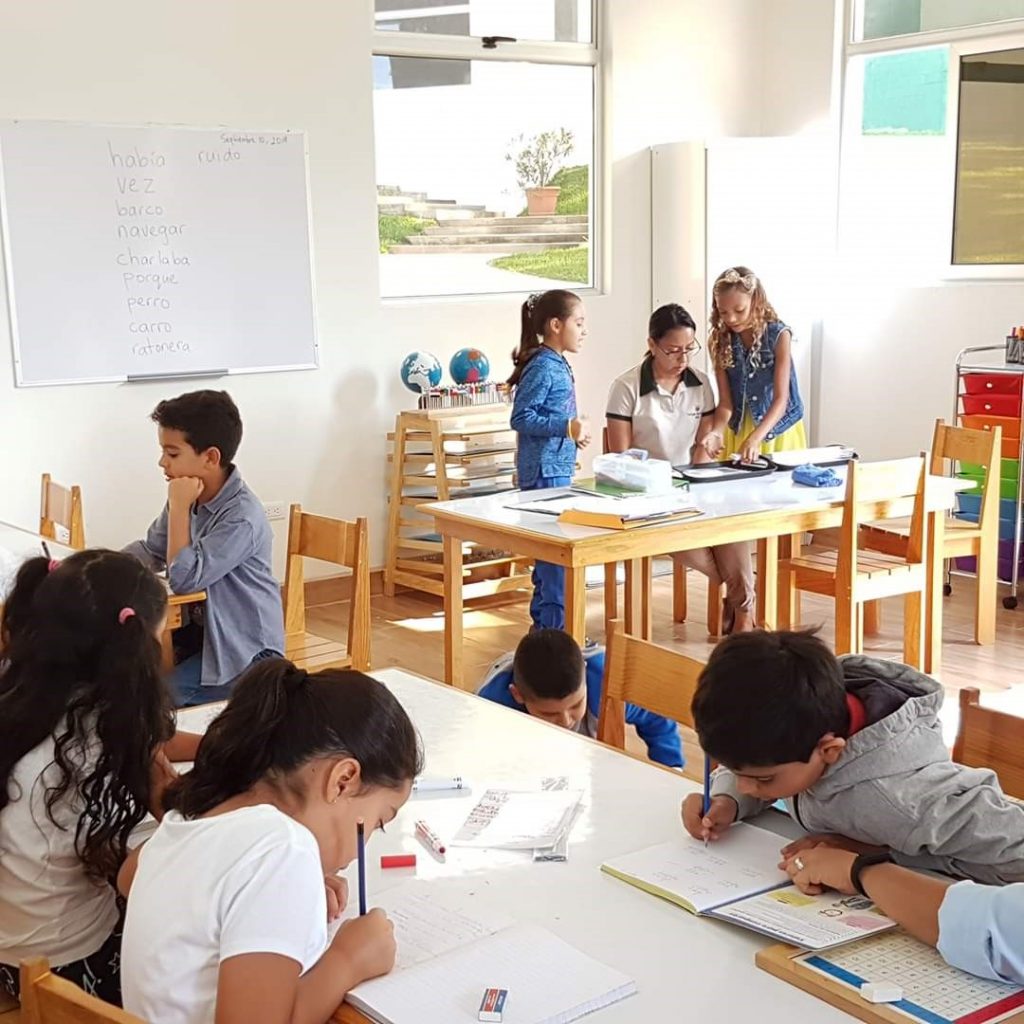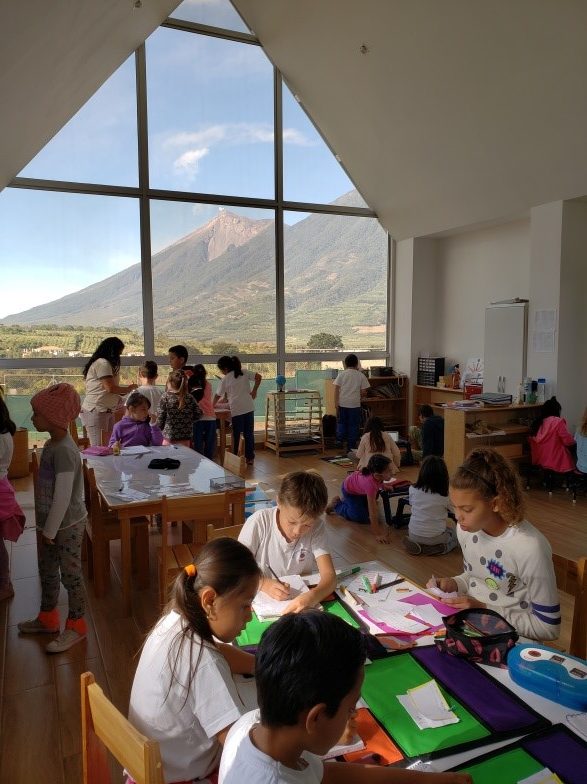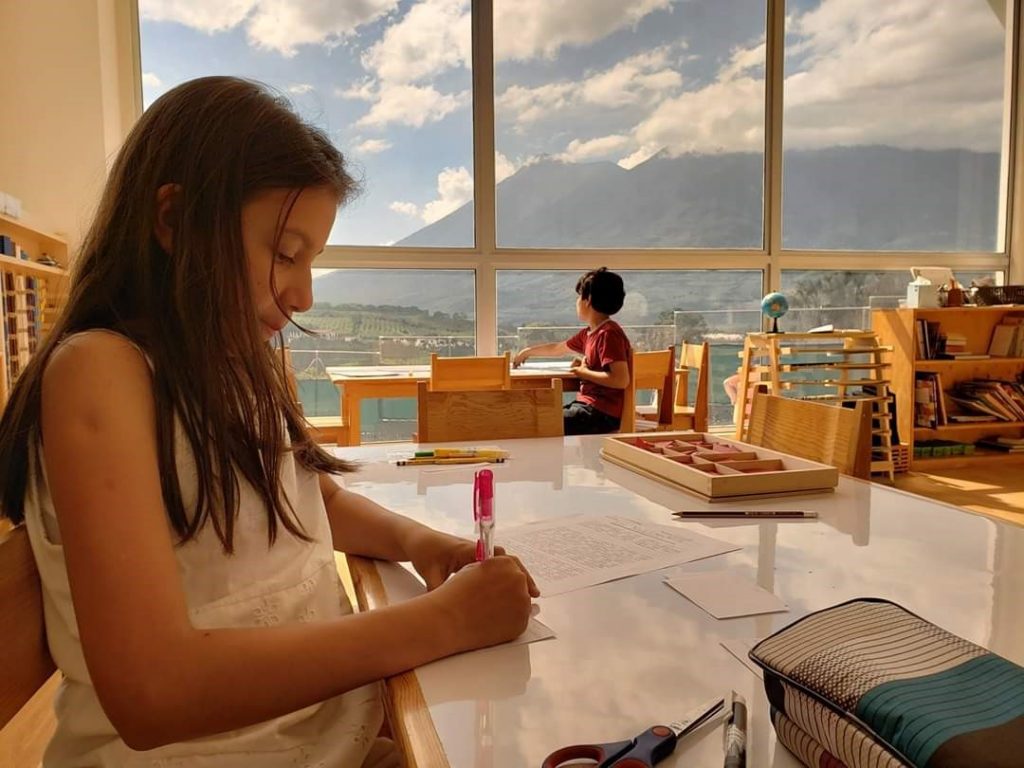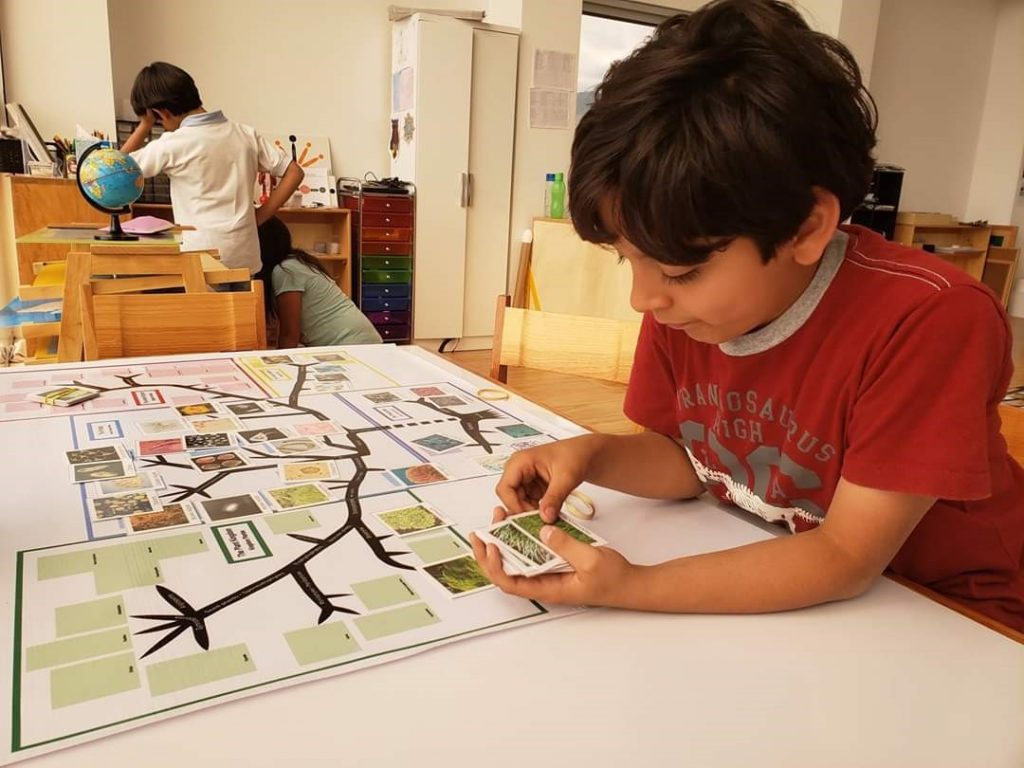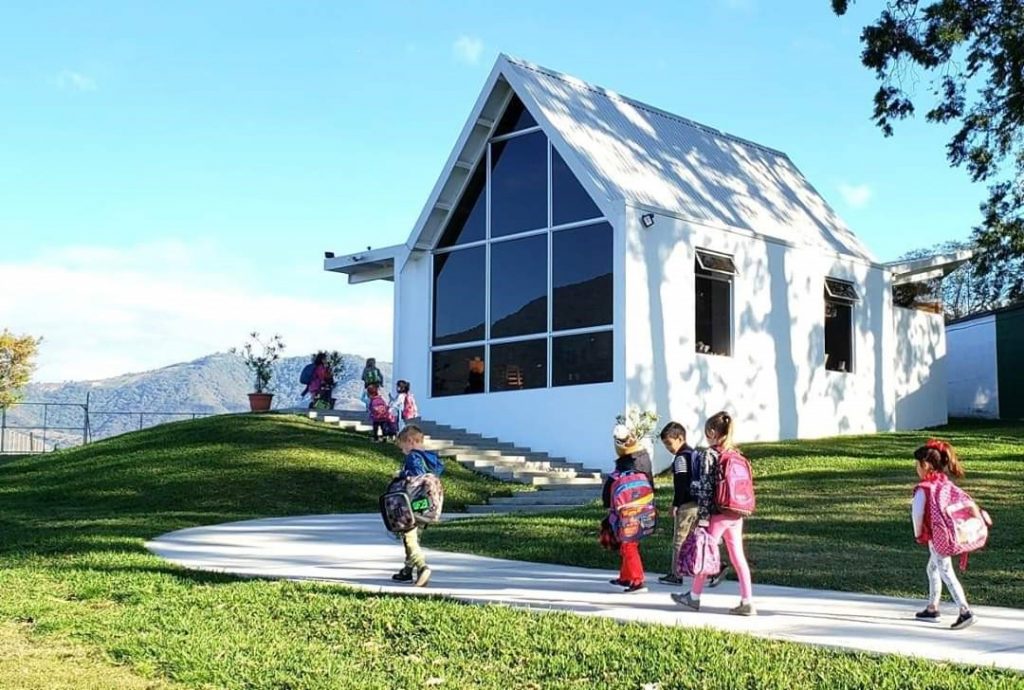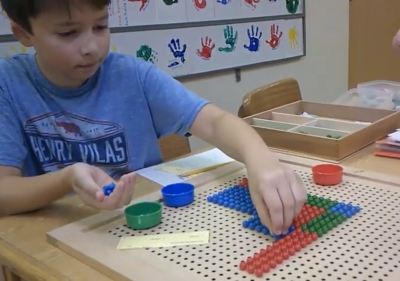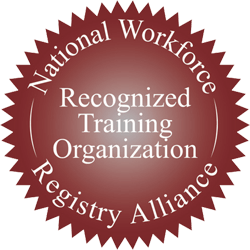What do colleges need from their new students? Are Montessori secondary programs meeting those needs?
Over the past three years, we have visited and met with professors and admissions officers at over 20 and colleges and universities. In these conversations, the picture which has emerged is that generally students who arrive on the threshold of their university career – learners who have entered into the fourth plane of development – are lacking in three abilities:
- Critical thinking and problem solving
- Adaptability and resilience
- Coping with ambiguity
At the time of her death Dr. Montessori had not completed her life’s work. It is well known that her explication of adolescent education was less developed, compared to the breadth and depth of her programs for the first and second plane of development. She established the architecture for a residential high school model she called erdkinder however, the actual curriculum is drawn with sketch marks. It is true that the needs of the third plane are well established however, the different visions of how best to meet those needs vary from erdkinder-inspired farm schools to IB programs.
If direction for the third plane is a bit less specific than we might like, information about the fourth plane is even sparser. In every work of Dr. Montessori’s, she put forth her manifesto of improving the world through teaching children. She talked about the needs of humanity many times. However, when it comes to university[1], she said very little.
In her short essay The Functions of the University, she wrote of universities that, “perhaps it would be better to say that higher schools must be interested in determining the way in which human energies are prepared in the lower ones.”[2] This leaves us with two critical questions:
- What would a university look like that truly meets the needs of early[3] adults as they enter the fourth plane?
- If we can identify what these institutions of higher learning look like, what does this mean for the Secondary programs and the preparation of students in them? In other words, what should a Montessori high school look like in order to prepare children to step up to the needs of the fourth plane of development?
Over the past several years, a number of Montessori educators have begun exploring these topics. To say that we have not exhaustively solved these problems is, perhaps, an understatement. In future articles we will offer a summary of our experiences visiting 20 innovative private colleges, and the learning and instructional practices they employed. In the meantime, it may be valuable to share a few things we’ve learned so far.
We began our inquiry by poring over what Dr. Montessori has written about early adulthood. Many of these points will resonate with trained professionals as insights that apply to one, or even all of the planes of development.
The purpose of post-secondary education
Here is the purpose of education at this age, as she saw it:
- Fundamentally, Dr. Montessori believed that these adult students should be preparing themselves for their “mission in this world”.
- One purpose of the university is to provide an environment that will render the learner “capable of making his home in society”.
- Another purpose of universities is to teach individuals how to study, learn on their own, and “being set upon the path to scientific research.” We interpret this as an imperative toward life-long learning and learning scientific (or “critical”) thinking.
- An essential outcome of university study is that the student becomes “keenly aware of the needs of one’s own time.” In The Absorbent Mind, she criticized university education today for not fostering “intelligence capable of visualising the epoch and the problems of the times in which they live.”
- Attaining independence is a function of the University. This includes, but is not limited to, the financial independence of establishing a professional vocation. In The Absorbent Mind, she complains that “the people who come from school or university are not prepared for life.”
- Universities should “intensify [culture] and to make it penetrate into the conscience as a weapon for the defense of humanity and of civilization.
- Finally, Dr. Montessori said that the job of the University was to help “the leaders of the new humanity emerge.”
The proper university environment
From that thesis, she described the proper University environment:
- To really understand at this level, the students must actively discuss a topic.
- “Communication in education enhances not only learning, but enthusiasm. Therefore, there must be opportunities for spontaneous collaboration.
- �Montessori felt it would be best if students began while in university to develop their own economic independence.
- �She was not concerned about whether students attained their degree in a set period such as four years; she advocated students see themselves as life-long learners and saw no reason for students to rush their studies.
- �While Dr. Montessori never explicitly calls for grades in university to be abolished, she makes it clear that she doesn’t think these students should be worried about or focused on grades.
- �Education at this age must “offer a wider environment and to multiply the possibilities of association and of activity.” She taught that the “four walls” of the University are not sufficient for education at this stage.
- �The experience of dealing with “different ages and different social classes” will help a leader “become worthy of becoming the leader of anything”. Today, we might summarize this more generally: Dr. Montessori recognized the value of diversity in education.
- �In The Absorbent Mind, she says of new graduates that “all these years of study, all these years of listening, do not form ‘man’ ; only practical work and practice do that.” It may be implied that she thought that higher education should have a practical component, just as do the earlier stages of her methodology.
Dr. Montessori was a scientist, first and foremost. She stayed current with the science of her time, and in many instances, anticipated discoveries that would be proven long after her. One discovery she may not have anticipated, however, is what we have recently learned about post-adolescent brain development. Dr. Montessori said “He who arrives at the university has left behind him childhood and adolescence: he is a formed person.” Indeed, in the Absorbent Mind, she says “After 18 man is considered completely developed and there is no longer any considerable transformation. Man merely becomes older. “
We now know this not to be entirely true. For instance, in the past decade it has been shown that the prefrontal cortex continues to develop until age 25. (https://www.ncbi.nlm.nih.gov/pmc/articles/PMC3621648/) Anecdotally, many of us look back at our early university behavior and beliefs with some chagrin.
We decided that using Dr. Montessori’s insights as a launching place, we would attempt to cautiously expand on her work.
Understanding the fourth plane of development
There is no reason to doubt that, had Dr. Montessori lived, she would not only have further detailed Secondary education, she would have doubtless contributed much more guidance to university aged early adults. If so, she would have begun by asking “What are the human needs of such people?” and “What are the needs of the culture they are participating in and contributing to?”
In the third plane of development, it is thought that questions of identity are paramount.
“Who am I?” They ask. “How do I fit into this world? What group am I part of?” One begins to look for areas where they can contribute, to begin to be both independent and to find meaningful ways to take part in the world. They begin to take an interest in economic activity, so it is common for Montessori programs to offer service-learning entrepreneurial opportunities. Emotionally, this is a time of great insecurity, although we see at Montessori high schools that a supportive environment can greatly ameliorate the risks and excesses of this stage.
In contrast, we know that at the fourth plane these early adults are much more confident. They have more than an inkling of who they are, and many begin university with some idea of how they intend to contribute to the world. We would say that, at this age, the questions they are asking are “What is my cosmic task?” and “How may I begin this great work?”
The merging of the early adult into their culture is the primary activity of the university years, and so actual integration into that culture must be part of that task. It is not enough for the student to, as Dr. Montessori put it, reside within the “four walls” for their university years. They should be actively involved in the larger world in some manner that is meaningful for their personal pursuits. In traditional universities this is accomplished through optional internships. We believe Dr. Montessori would find this insufficient to the needs of the early adult.
As Dr. Montessori insisted that discussion and collaboration are essential to this plane of development, we would suggest that an ideal university would need to develop a curriculum that integrates seminar style discussions and group projects. As always, she felt grades to be a distraction to real education, so in this university they would be downplayed, or indeed might be absent altogether. At the stage, the ability to self-assess – one’s worth and one’s work – are vital to achieving a successful transition into the world-at-large.
Independence is also a trait that she felt must be nurtured, but not in a sense of isolated empowerment. Her notion of independence might be closer to what we sometimes call “interdependence”, in that she felt an independent individual was not a lone wolf but an active and productive member of society-at-large. We believe this implies that opportunities for such participation should be principal components of higher education; if not available in the community, then such opportunities must be offered within the university environment. Her passages about leadership suggest that cultivating world changing leaders is an important role of the university.
These points may seem similar to the many experimental colleges established along the lines of John Dewey’s vision of progessive education[4]. Both authors of this paper each attended one such college[5], and applaud its ideals.
However, Dr. Montessori’s emphasis on fostering connections with the real culture-at-large sets her vision quite far from the academic ivory towers of many progressive schools. It is apparent that most universities train early adults in the fields to which they hope to eventually join, but neither prepare them for the actual work, nor do they give them much (if any) practical and applied experience in these professions. In contrast, Dr. Montessori’s vision would have these students begin in this period the actual practice of their cosmic task in the context of real life experience.
Following but separate from this is Dr. Montessori’s requirement for these schools to incubate their students’ economic independence. Where Secondary programs often hold class businesses, the needs of the fourth plane require early adults to begin actual participation in economic activity. We have an opportunity to combine this requirement for economic participation with her
- �emphasis on leadership,
- �emphasis that these students be prepared to become life-long learners,
- �emphasis on teaching scientific or what we might call critical analysis
When we integrate all these factors, we come to a startling conclusion. A Montessori inspired university would need to teach entrepreneurial thinking. This is not to say that every early adult at such a university would, or should, become an entrepreneur. But it does seem today that even students of the arts need to know how to understand the needs of their consumers and colleagues and how to clearly communicate their services to them. Political leaders and activists need to understand how to organize and inspire, as well as to raise funds. Learning to recognize a need and lead change is an essential skill of entrepreneurial thinking that can be applied to practically all fields.
Implications for high schools
It must be the goal of the secondary program to prepare students for the university environment. If two of the highest purposes of the university are to teach entrepreneurial thinking and to help launch early adults upon their cosmic task, secondary programs must prepare them for this work.
There are many excellent Secondary programs following different models, and at this time we see no evidence that one model surpasses others in all aspects of learning and development. We can suggest, from our study, that many programs may benefit from close incorporation of a few factors into their curricula.
- �Secondary programs should expand on their efforts to teach entrepreneurial thinking and behavior. Working farm schools could offer teens seed money to create their own businesses from the products of the farm. IB schools could integrate more entrepreneurial concepts and projects, and teach their students using methods of collaborative inquiry. Any model of the Montessori secondary program could incorporate some of these methods. Group analysis of case studies of entrepreneurial solutions can be fodder for this work, though care should be taken to include not-for-profit examples as well.
- �As much as possible, Secondary programs should afford teens an opportunity to meet local community leaders and to learn about the ways activists and entrepreneurs have transformed and contributed to their communities. Projects should be developed around attainable and self-chosen goals that would provide leadership.
- �Montessori Secondary programs are not lonely affairs. In fact, the primary inclination of an adolescent is to be social. To meet the oncoming needs of the fourth plane, where a greater gravitation toward independence is often exhibited, we should balance independent activities with collaboration for our secondary adolescents.
- �As much as possible, the individual needs and interests of students should be not just accommodated, but directly incorporated into activities both within and outside of the classroom. Those that generate the most enthusiasm should be directed toward the real world implications of such interests.
- �The erdkinder model was designed to support teenagers becoming independent both psychologically and economically[6]. We believe this is a correct goal that leads directly into the needs of the fourth plane. Yet, in a modern world of global markets and social media, the isolation of a rural farm model will not be available to all students. We would suggest that secondary programs concretely plan around the psychological challenges of the modern environment; rather than treating these ills[7] as grave concerns to caution against, we instead recommend schools treat them as the reality and opportunities of this era and promote healthy mechanisms to deal with challenges as they arise. Similarly, in this age of instant information and services, there may be opportunities to introduce principles of economic independence in a way that aligns closely with the modern world, using the same principles of business education suggested above.
We will continue to explore this topic and others that arise out of the needs of the early adult learner. We hope that this may have positive, if small, implications across all levels of the Montessori curriculum. One area of particular interest to this group is an under-addressed service that all Montessori leaders are familiar with: professional training. Montessori training is largely conducted in the same manner that Dr. Montessori herself introduced in the early 1900s, which is to say in a largely traditional manner. We are hopeful that our visits to experimental colleges and our philosophical cogitations will help us to find areas amenable to improvement
Footnotes
[1] Dr. Montessori principally used the term that translates to “University”, but for our purpose we will use the term to mean formal education which proceeds directly after adolescence, whether it be a college or university. This will be in contrast to trades, which though they be important forms of education, are not the subject of this article.
[2] From this point on, all unattributed quotes will be from Dr. Montessori’s short essay The Functions of the University which appears in the book from Childhood to Adolescence.
[3] The term “young adult” is often employed to mean teenagers. Here we use the term “early adult” to distinguish persons roughly from the age of 18 to 21.
[4] https://www.jstor.org/stable/42922419?seq=1#page_scan_tab_contents
[5] Goddard College, located in Plainfield, Vermont
[6] The Montessori Way, P. 150
[7] Online harassment, sexting, cyber bullying, scams, etc.

